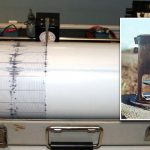
EARTHQUAKES RESISTANT BUILDINGS
An earthquake is a sudden, rapid shaking of the earth surface caused by the breaking and shifting of rocks beneath. During earthquake, ground motion occurs in a random fashion in all directions radiating from a point within earth crust, called epicentre. It causes vibrations of structures and induce inertia forces on them. As a result structure may collapse resulting into loss of property and lives. Earthquakes
do not kill people, vulnerable buildings do so. Hence there is need of designing earthquake resistant buildings, especially in the earthquake prone areas.
TYPES OF EARTHQUAKES
Depending upon the possible causes, the earthquakes may be classified as:
1. Natural earthquake
2. Earthquakes due to induced activities.
Natural Earthquakes
Natural earthquakes may be due to
(i) active faults
(ii) movement of tectonic plates or
(iii) due to volcanic eruptions.
In earth’s crust there are some faults which are not yet settled. The displacement of rocks along faults cause earthquake. Tectonic means large scale process affecting the structure of the earth crust. This process causes gradual movement of material within the crust of earth. Sometimes it shakes the earth crust. Volcano is a mountain or hill having a crater through which lava, rock fragments, hot vapour and gas are or have been erupted from the earthscrust. Occasionally the volcanoes become active and create earthquake near the mountain crater.
Earthquakes due to Induced Activities
These are caused by vibrations induced by atomic explosions and collapse of ground due to faulty mining.
TERMINOLOGY
1. Focus: The point on the fault where slip starts is the focus. It is also known as hypocentre
2. Epicentre: The point vertically above the focus on the surface of the earth is the epicentre.
3. Focal Depth: The depth of focus from the epicentre is called the focal depth.
4. Epicentral Distance: Distance from epicentre to any point of interest on the surface of earth is called epicentral distance.
MAGNITUDE AND INTENSITY
Magnitude is a quantitative measure of the actual size of the earthquake. Professor Charles Richter proposed the scale of magnitude that goes from 0 to 9. It is a geometric scale. Now this scale is known as Richter scale. It is obtained from the seismograph. It depends on waveform amplitude on epicentral distance. It is denoted by letter M followed by the number. An increase in magnitude by 1 implies 10
times higher waveform amplitude and about 31 times higher energy released. Thus energy released in M6 and M5 earthquake have the ratio 31, and M8 to M5 have the ratio 31 × 31 × 31. There are other magnitude scales, like the Body Wave Magnitude, Surface Wave Magnitude and Wave Energy Magnitude. Intensity is a qualitative measure of the actual shaking at a location during an earthquake. Hence
for the same earthquake, it has different values at different places, highest value being at epicentre. This is a linear scale. It is assigned as Roman Capital Numbers from I to XII. Intensity depends upon
1. Amount of source energy released
2. Distance between the source and the place of interest
3. Geographical features of the media of travel and importantly on the type of structure. Modified Mercalli Intensity (MMI) scale is commonly used to express the intensity.
MMI scale is as given below:
I. Very slight, felt only by instruments
II. Felt by people resting
III. Felt by passing traffic
IV. Furniture’s and windows rattle
V. Can be felt outdoors, clocks stop, doors swing
VI. Furniture’s move about, cracks appear in walls
VII. People knocked over, masonry cracks and falls
VIII. Chimneys and monuments fall, buildings move on foundations
IX. Heavy damage to buildings, large cracks open on ground
X. Most buildings destroyed, landslides occur, water thrown out of lakes
XI. Catastrophic, railway lines badly bent
XII. Utter catastrophic, no building is left standing.


